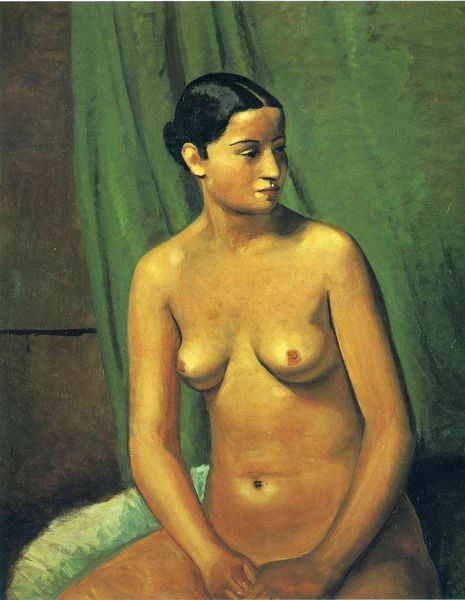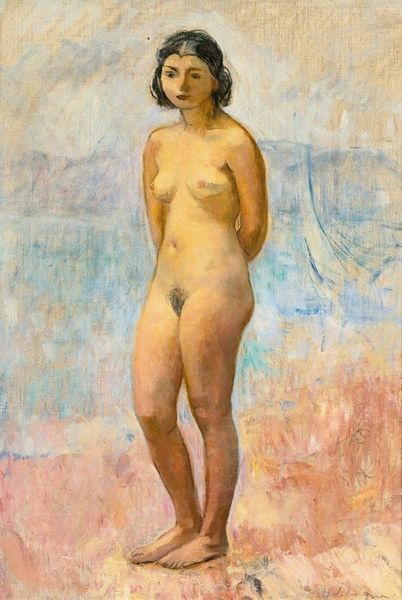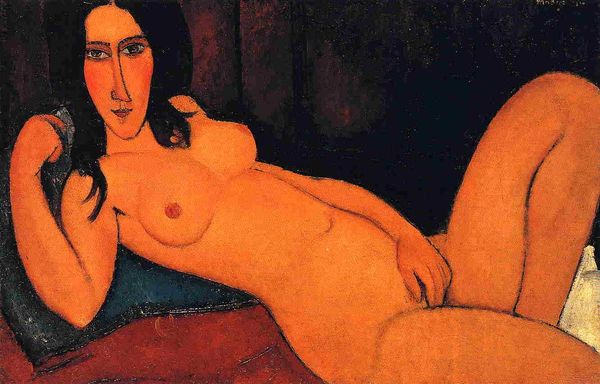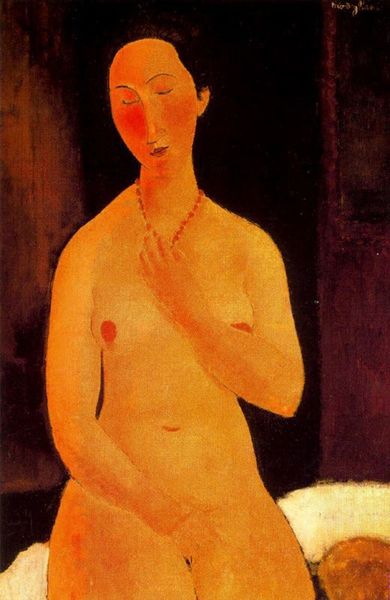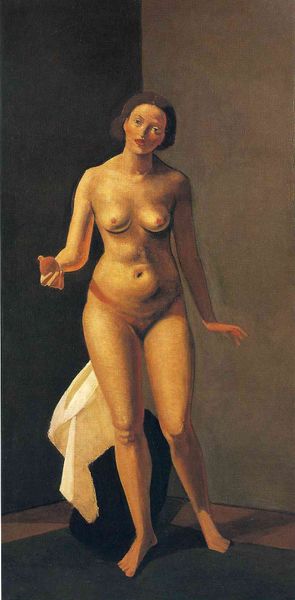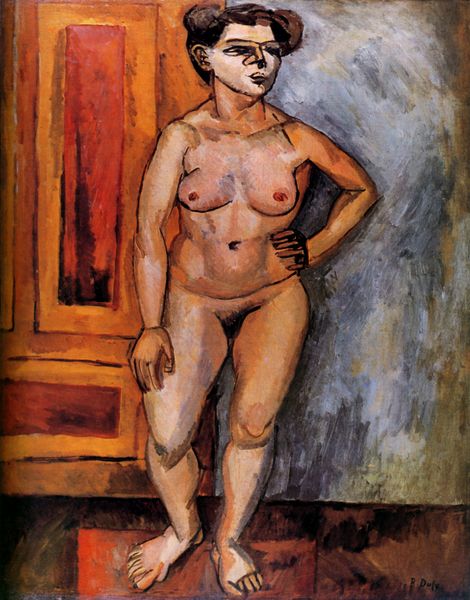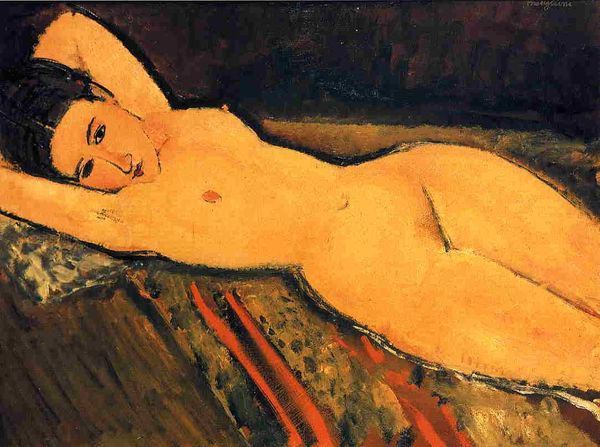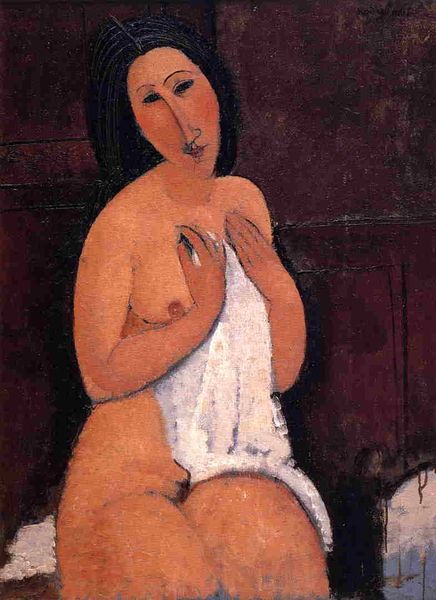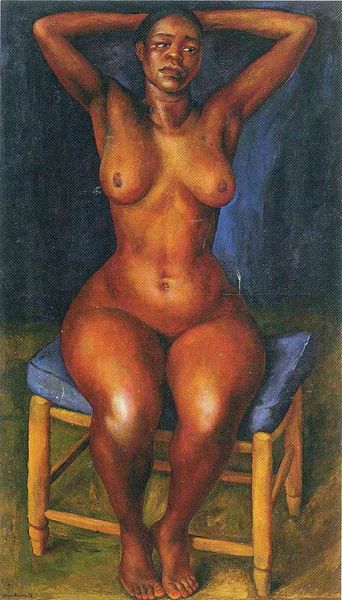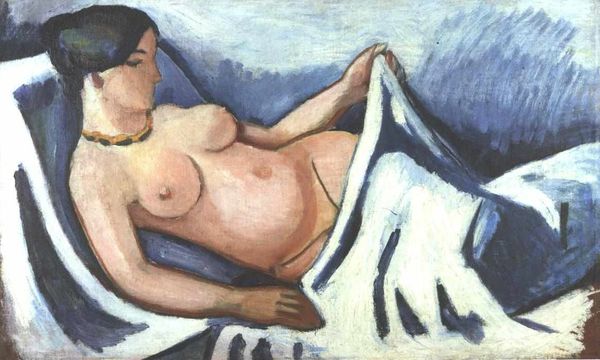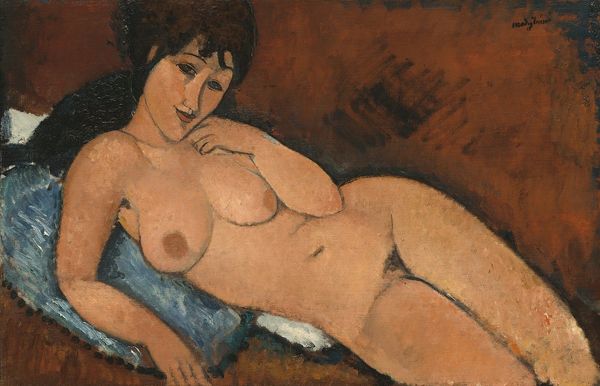
drawing, painting, oil-paint
#
portrait
#
drawing
#
cubism
#
painting
#
oil-paint
#
figuration
#
oil painting
#
female-nude
#
nude
#
early-renaissance
Copyright: Public domain US
Curator: Immediately, the first thing I see is the pose, almost classical in its presentation of the seated figure. The artist clearly knew and referenced artistic precedents but brought them through a unique filter. Editor: I'm intrigued by that tension between familiarity and something altogether new. The seated nude in Picasso's 1906 oil painting exudes a solemn quality, doesn’t it? It’s arresting how the subdued palette throws that form forward. Curator: Exactly. And look at the subject's gaze. It's direct, unwavering, not idealized or sexualized. The artist engages a different form of connection that goes back millennia, stripping away the modern tendencies that would shape the century's art world. Editor: A conscious choice, especially if you consider Picasso’s context: navigating the established traditions of Western art, the evolving avant-garde, and the social and sexual dynamics embedded in the art world. Her posture seems deliberate—defiant even. Curator: I think it’s a reclaiming of the classical canon. There’s a very particular lineage of female representation, and the figure doesn't follow the accepted conventions. We aren't drawn in for aesthetic appreciation as much as for a moment of awareness and contemplation. Editor: You raise a fascinating point about reclaiming visual language, as this painting arrived early in a career that became infamous for radically upending Western representational traditions. It's provocative how this work participates in that process. I wonder if Picasso deliberately disrupted those aesthetic and cultural traditions and how this may have influenced younger generations to explore and dismantle conventions. Curator: Undoubtedly, the painting seems to question how much the public values and expects of female nudes. Here, the symbolic is in that lack of embellishment; the intent, as far as I see it, goes beyond physical likeness into the nature of observation. Editor: Ultimately, "Seated Nude with Her Legs Crossed" leaves you to ponder: how can an artist break from prevailing norms yet retain the thread of collective artistic understanding? It still invites reflection and conversation, much as it might have ignited heated debate in Picasso's time. Curator: I agree. This work presents enduring questions about our ways of seeing and the symbols that inform them.
Comments
No comments
Be the first to comment and join the conversation on the ultimate creative platform.

